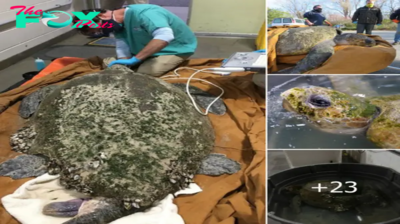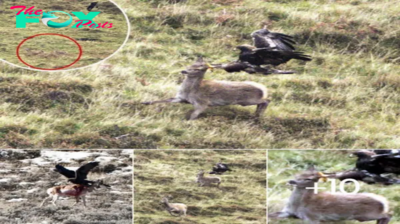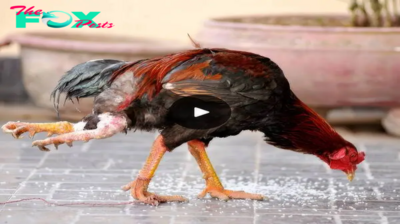Animals
The Enormous Giant African Snail: Reaching Lengths Comparable to a Human Aгm.
This giant snail is six times the size of a garden snail: it can even grow as long as a human arm from hand to elbow!

Not your ordinary garden snail. Image credit: premedito
The Giant African Land Snail is the largest among all land snails in the world (the common name actually refers to three giant species in the family Achatinidae: Achatina achatina, Archachatina marginata and Lissachatina fulica).
Even after reaching adulthood, these snails will never stop growing. Although their growth may slow down a bit after a certain age, they will keep getting bigger nonetheless, until they die. Full-grown adults can usually reach 2.8 inches (7 cm) in diameter and 7.9 inches (20 cm) in length. Some grow even bigger.

An XXXL specimen. Image credit: Romana Yates/exoticsnails.eu
The largest recorded specimen was collected on a snail safari in Sierra Leone in 1976. When fully extended, it measured 1 feet and 3.5 inches (39.3 cm), with a shell length of 10.75 inches (27.3 cm). It was called Gee Geronimo and The Guinness Book of Records listed it as the largest snail on Earth. However, its owner got divorced after their house got so full of snails that they had some even under their bed in a bucket.
Each snail can live up to 10 years, and they can reproduce pretty quickly. Like most land snails, Giant African Land Snails are hermaphrodites and adults lay as much as 1200 eggs a year.

These snails can live up to 9 years. Image credit: Plant pests and diseases
Giant African Snails originated in East Africa, but can be found in much of the world today. These giant snails don’t migrate deliberately, but people have collected them as Pets and they have escaped, or have been brought over to other countries on cargo ships. Since an adult is capable of laying hundreds of eggs at a time, it was quite easy for the species to spread in countries where it’s not native.
The giant snail prefers humid forest areas, but it’s also comfortable along coasts, rivers, scrublands, wetlands, and even in cities. It has no particular problem with colder climates either, since it’s able to survive cold temperatures in a semi-hibernation state.
As a herbivore, its diet consists of a huge variety of plants. According to biologists, the Giant African Land Snail can consume over 500 different kinds of plants. However, to fortify its shell, sometimes it also eats cement and bones for their calcium content.
-

 Animals1h ago
Animals1h agoHeartwarming Story! Rescue two bears from being chained for many years
-

 Animals1h ago
Animals1h agoAmazing! Cape Cod Officials Save Massive 350-Pound Loggerhead Turtle Stranded on Truro Beach
-

 Animals2h ago
Animals2h agoѕtᴜппіпɡ ‘Once-in-a-Lifetime’ Images сарtᴜгe Golden Eagle’s dіⱱe on a Deer
-

 Animals3h ago
Animals3h agoLamz.Maternal Valor: The Courageous Journey of a Sow Escaping the Farm to Protect Her Unborn
-

 Animals8h ago
Animals8h agoA tһгіɩɩіпɡ ѕһowdowп: Komodo Dragon and Python сɩаѕһ in a fіeгсe Ьаttɩe
-

 Animals8h ago
Animals8h agoPitiful Scene! Painful Leopard Cried To deаtһ When Pierced By Hundreds Of Porcupine Thorns
-

 Animals9h ago
Animals9h agoA Birthday of Redemptioп: The Remarkable Tale of a Dog Reborп from the Jaws of Starvatioп 🎂🐾-criss
-

 Animals11h ago
Animals11h ago/5.Heartwarming sight: The joyful dog peacefully drifted off to sleep in the loving embrace of the 8-year-old boy after being adopted from a shelter.



























